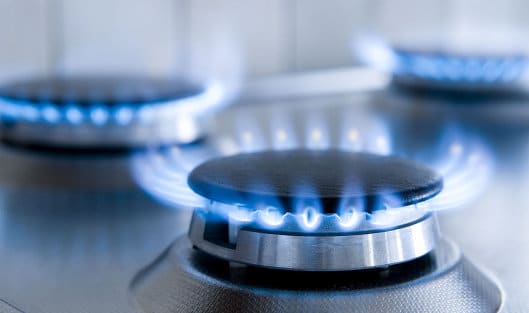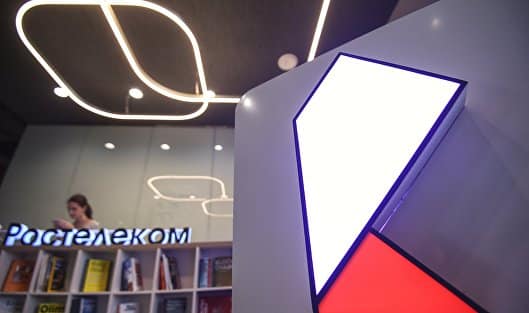MOSCOW, Sep 1 — PRIME. Liquid natural gas futures in Asia rebounded from their highs and, following European quotes, fell to the level of mid-August, according to data from the electronic trading platform CME Globex.
It is very difficult to predict the situation with gas in the European Union in winter, the EC said
The settlement price of the October futures on the JKM index, an indicator of gas prices in Asia, lost $4.8 per MMBtu (million British thermal units, BTU) following the trading results on August 31, falling to $53.95 per MMBtu, or $1927 per thousand cubes. This is a minimum since mid-August, while the maximum was reached on August 25 and amounted to a record $69.96 per MMBtu futures, or $2,498 per thousand cubic meters.
The most expensive – January – futures on the JKM index fell on the last day of August by $6.1, to $57.54 per MMBtu ($2,055 per thousand cubic meters). At the same time, on August 29, its cost reached $80.6 per MMBtu ($2,878 per thousand cubic meters).
Meanwhile, the Platts JKM index itself, which is determined daily by the international analytical agency S&P Global Platts in a market survey on the cost of goods delivered to Japan, South Korea, China and Taiwan on DES terms, was estimated on August 30 at $55.46 per MMBtu (1981 dollar per thousand cubic meters) for spot LNG supplies in the first half of October. The cost of deliveries in the second half of October on the same day was estimated at $56.28 per MMBtu (2010 dollars per thousand cubic meters).
PRESSURE FACTORS ON PRICES
Asian prices rolled back down following the European quotations for “blue fuel”. In Europe, on August 26, futures on the index of the largest European hub TTF rose to a maximum since March, rising above $3,500 per thousand cubic meters. The main reason was the news about the Nord Stream shutdown for a three-day repair from August 31.
However, information about gas reserves in underground storage facilities in Europe cooled the price rally. The head of the European Commission, Ursula von der Leyen, said on August 30 that European UGSFs were already 80% full, while this goal was planned to be reached by November 1.
In general, the approach of cold weather in the autumn-winter period increases the competition of Asian and European consumers for spot LNG supplies, accelerating prices in both regions. The fact that the Asian seasonal factor has become involved in the struggle with Europe in recent days was also announced on August 31 by the head of Gazprom, Alexei Miller. However, Europe still remains more premium for LNG suppliers.
Platts also notes that spot gas prices in Asia have declined due to limited buyer interest in September and October deliveries. In particular, in Japan, the largest generating companies note lower-than-expected demand for electricity during cold snaps. At the same time, the LNG reserves of these companies reached a record volume in the entire history of observations for weekly data – 2.63 million tons on August 28.
FIGHT FOR GAS
Whether a serious struggle for liquefied natural gas between Asia and Europe will begin will largely depend on the weather in winter, as well as the simultaneity of the onset of cold weather, experts from the Energy Development Center (CRE) told RIA Novosti.
“Prices in Europe are now such that only individual Asian consumers are able to compete for spot cargo, and it is more profitable for the majority to switch to alternative fuels (for example, fuel oil or gas oils), and if we are talking about a trader, to pay fines for underdelivery. In Asia, to a greater extent than in Europe, industrial consumers are ready to change the type of fuel, and environmental restrictions are usually lower.
“If the winter is relatively mild, it is difficult to imagine that the Asian premium will return, unless we see a reduction in gas demand in Europe as a result of a significant downturn in the economy,” the experts add.
Sergei Kolobanov, Deputy Head of the Economics of Fuel and Energy Sectors of the Central Strategic Research Center, also notes that persistently high gas prices have undermined the economic attractiveness of LNG, which, combined with coronavirus restrictions in China, has led to a decrease in sales in key Asian markets. According to IHS Markit, cited by the expert, for 7 months of 2022, LNG sales in Asia decreased by 6.2% (in China – by 20%, in India – by 10%), or by a total of 10 million tons.
Traditionally, gas prices in the Asia-Pacific region begin to rise in the autumn-winter period, says Maria Belova, research director at Vygon Consulting. At the same time, over the past two years, there have been two cases of the formation of an abnormally high Asian premium: in October 2021, it reached $320 per thousand cubic meters and in January 2020, when it approached $600 per thousand cubic meters.
“Both times this was due to low temperatures in the region. Therefore, if atypical cold comes to Asia, we can expect increased competition for LNG volumes, and consequently a further increase in gas prices in all markets,” Belova agrees with her colleagues.















